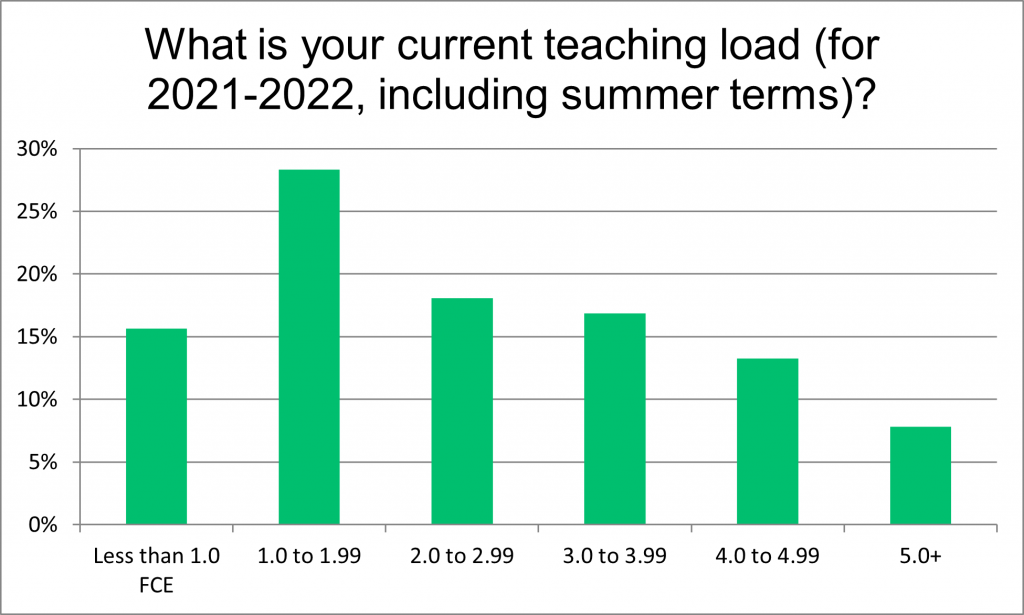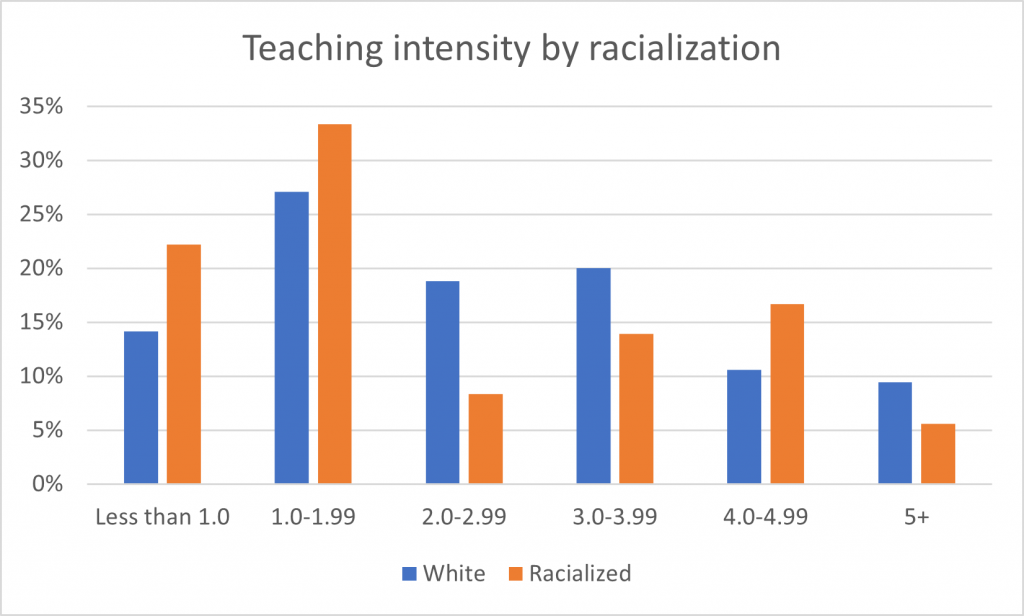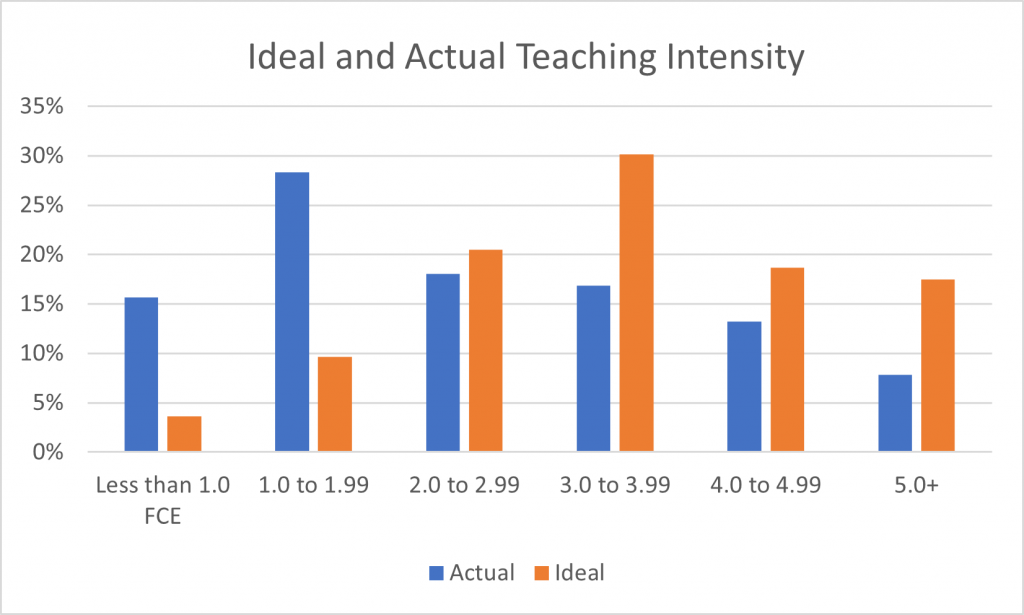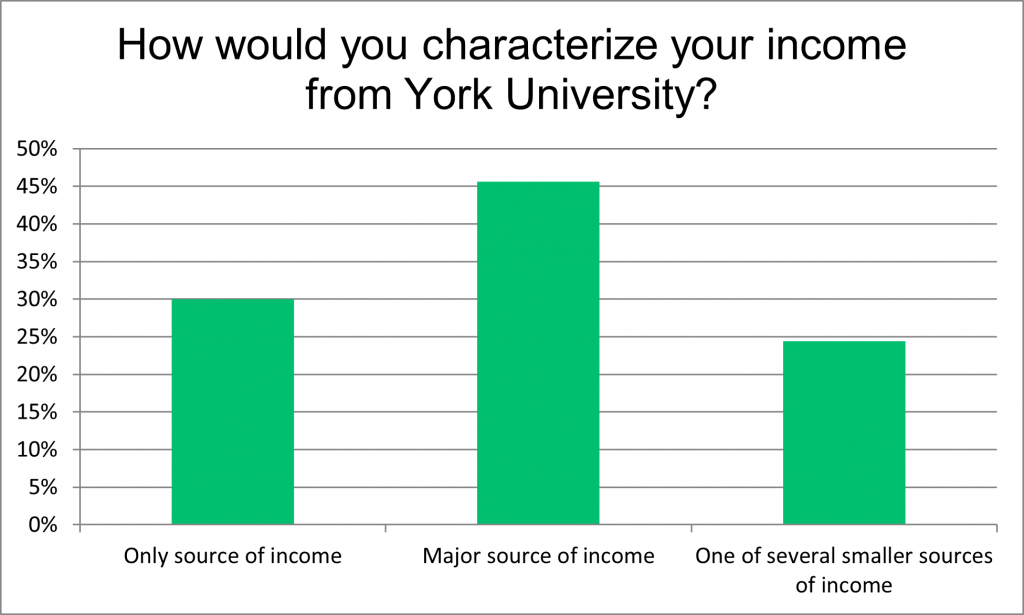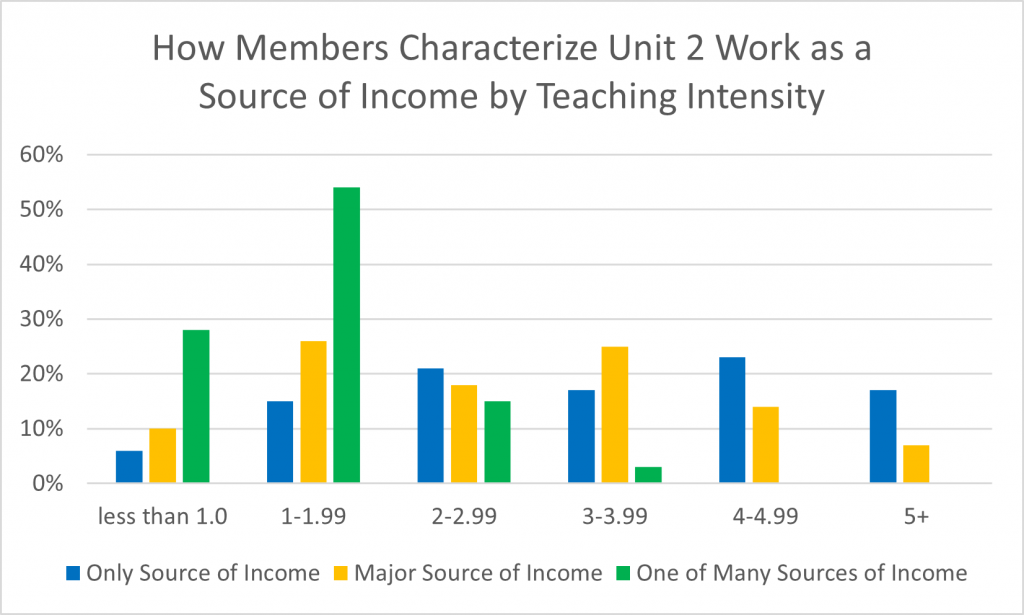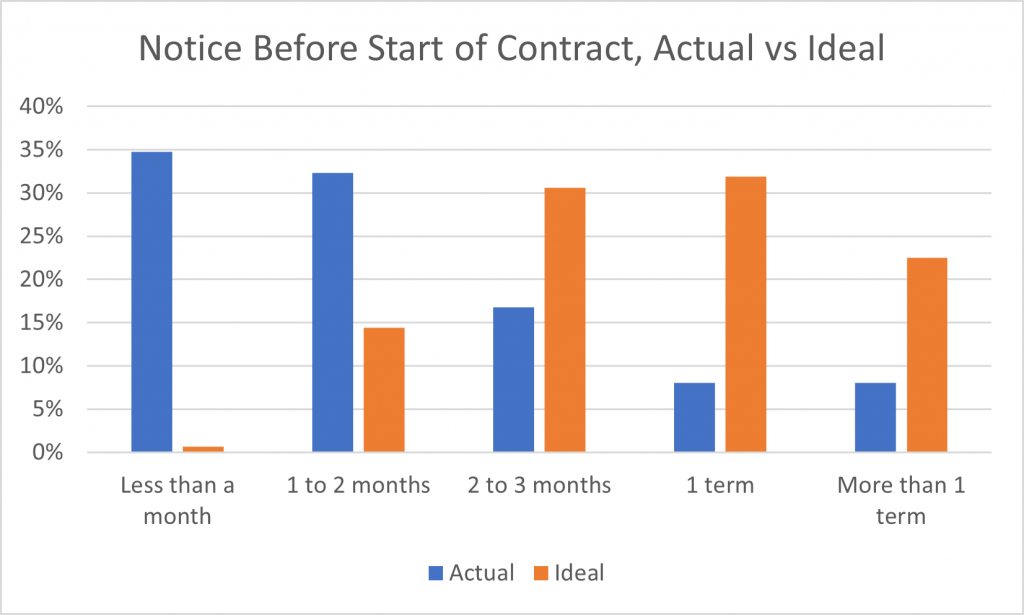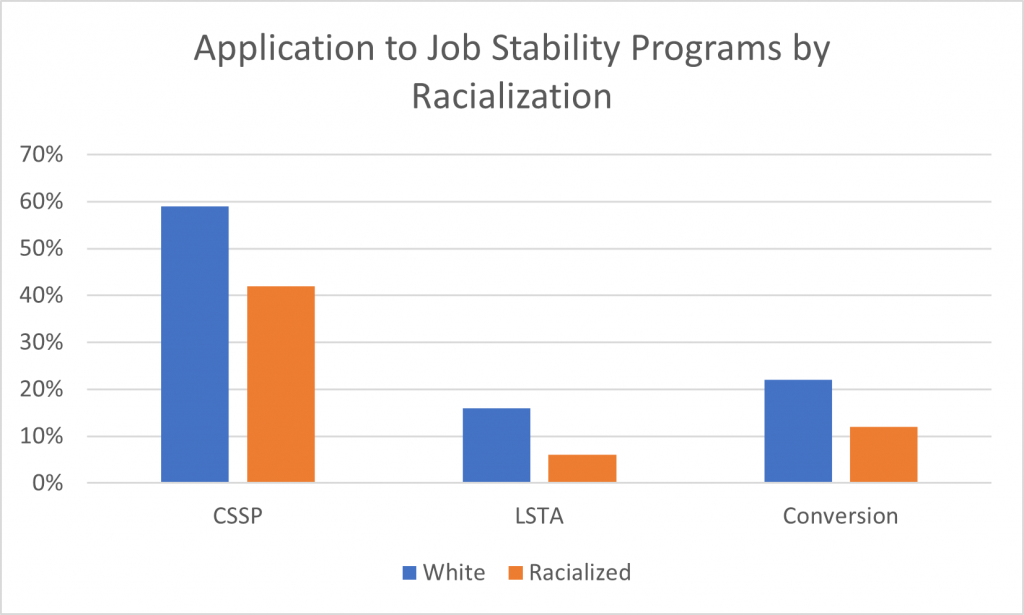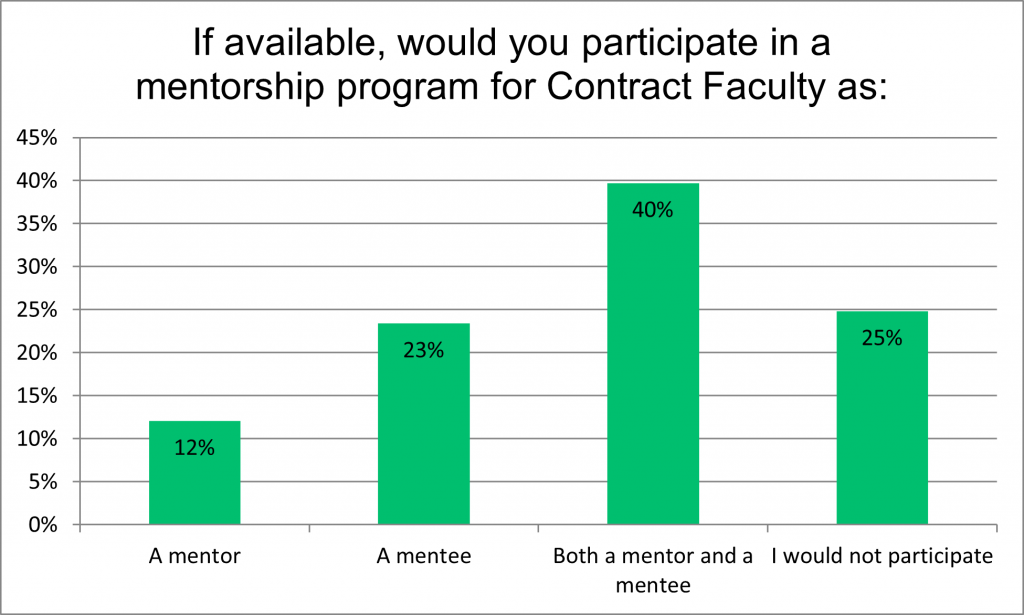As the June 30 deadline for the Job Stability Joint Committee (JSJC) approaches, the committee is moving from the discussion of concepts to the specific provisions that could be used to address job stability at York University for Unit 2 members
As part of this process, the union-side of the joint committee has reviewed the answers to the May 2022 Job Stability Survey, as well as recurring themes in bargaining, to identify some key problems and some possible solutions. The committee thanks every member who filled out the survey; your answers helped shape how we understand what needs to be done.
Increasing Stability and Predictability
Having sufficient, stable employment and knowing how to budget for the year are recurring themes in every bargaining round, as they have such a strong material effect on members’ lives. This reality was reflected in the survey results, which show that a large number of members are teaching at a low intensity. As such, any lasting solution to the problem of job stability must address lower intensity teaching, not only higher seniority and higher intensity teaching. Since systemic inequities affect who accrues seniority and high intensity teaching, an approach that acknowledges the importance of low-intensity teaching at York is an essential part of an equity analysis.
Analysis of our survey results reveals that racialized members are more likely to teach at a low intensity, despite indicating that they are both interested in and available for additional assignments. The Union calls on the Employment Equity Committee to further investigate this finding and make recommendations to address the barriers that lead to low intensity workloads for racialized members.
An assumption that we hear often from the employer and others is that this cluster of low-intensity teaching is done by those who choose to teach one or two classes while working full-time elsewhere. While this may be true in some cases, our survey shows a large discrepancy between the number of people who are actually teaching at a lower intensity and those for whom that intensity is an ideal or even livable teaching load.
In fact, our data shows that Unit 2 work is an important source – often the only source – of income for members. While some of these members do teach at higher intensities, many have to make do with low-intensity work. Low intensity teaching creates financial precarity for our members, which will only increase as a result of the cost of living crisis we are experiencing in this city and country.
With this context, it is perhaps not surprising to note that 31% of respondents reported accessing Employment Insurance or other government assistance. This points to a large and widespread inequity at the basis of much of the teaching at York University. The employer should be ashamed that a significant portion of their workforce is relying on government assistance due to their failure to provide job stability and sustainable wages. We would hope that the employer is motivated to meaningfully address these critical issues through a job stability program, given the university’s stated commitment to social justice.
Finally, another aspect of job stability is predictability, i.e. the notice time members receive between being offered a contract and having to design and deliver a course. Again, here we see a large discrepancy between the notice time that members would find ideal and what they receive in reality. Notice is important not only to build the best courses possible, but also so that members can know how much income to expect and plan accordingly.
To be successful in the long-term, any job stability program agreed to as part of this JSJC process must address all of these factors by providing stable and consistent employment through a transparent process from within the CUPE 3903 Unit 2 bargaining unit.
Improving Retention and Access to Professional Development
Retention and professional development are other areas where we see both obstacles to job stability as well as possible solutions, highlighting once more how improving working conditions is intertwined with addressing inequities. While the Unit 2 collective agreement provides access to several different funds and leaves to encourage professional development and keep one’s academic credentials up to date, the results of our survey show that there is a lot of room for improvement in terms of access to and knowledge of the available resources. The majority of respondents have never applied to the various opportunities (such as Professional Development Fund, Tuition Cost Fund, Research Leave, Research Cost Fund, Travel Costs Fund, Teaching Development Fund, Tuition Waiver) and the most common reason cited across the board is that members were not aware that they were available. Additionally, for those members who successfully accessed these funds, between 30% and 50% did not find that the support was sufficient, and the most commonly cited reason for this is that not enough money was provided (with the exception of the tuition waiver).
Members’ lack of knowledge about professional development opportunities mirrors their lack of knowledge of existing job stability programs. After ineligibility, the most common reason given for not applying to the Continuing Sessional Standing Program (CSSP), Long Service Teaching Appointments (LSTAs) and Conversions is a lack of knowledge that the opportunity exists.
The survey shows that racialized members report being less likely to apply to existing job stability programs. Whether this is due to a lack of eligibility or a lack of knowledge of the programs, this data points to very real systemic inequities that prevent racialized members from accessing job stability at the same rate as their white colleagues.
Clearly, there is a need to make existing programs and resources more accessible. This could take the form of improved communication from both the employer and the union; another possibility identified by the union is a mentorship program. This program would be an opportunity for members of Unit 2 who know the ropes to help newer members navigate application processes, increase their knowledge of the available resources and opportunities, and overall help members get situated. According to our survey, there is broad interest in a mentorship program.
Interest in the mentorship program – especially in being a mentee – increases markedly for racialized respondents. Given the data above, this is hardly surprising. There is a marked need for improved community and support for racialized members at York in order to combat existing systemic inequities.
Increasing Representation from Equity-Seeking Groups
As we discussed in the last post, the employer’s claims to meet very basic representation thresholds don’t quite pass muster. Increasing representation isn’t about coming up with numbers to meet quotas; rather, it’s about taking real steps to build equity into the structure of Unit 2 work. As some of the numbers above imply, supposedly neutral structures of selection, retention, and professional development reproduce white privilege. York University must actively work to level the playing field by designing programs using an equity framework.
The 3903 members of the job stability committee want to build structures that address inequity beyond representation thresholds. This means expanding access to existing professional development like research grants and creating new supports for members to build teaching skills, participate in service work, and connect with mentors and colleagues. Such initiatives empower contract faculty to make the most of their academic career at York.
Providing a Path to Retirement
Another problem facing Unit 2 members is the lack of a clear and dignified path to retirement. 16% of respondents said that they were “unsure’ of when they would retire. This is not necessarily an answer just for those for whom retirement is far in the future: of those who responded that they were unsure, 62% are 55 or older. Access to the pension plan and expanded post-retirement benefits are needs that many members raised in the survey.
A robust plan for job stability must include a path to a sustainable retirement.
Don’t Miss the Job Stability Townhall: June 15th at 1pm!
Mark your calendars for the Unit 2 Job Stability Townhall on June 15th at 1pm, via Zoom! During this townhall, the union-side of the JSJC will present the work of the committee, how discussions with the employer are going, and some options that could address all of the issues explored above.
Don’t forget to register ahead of time for the townhall! If you have any questions, you can contact VP Unit 2 at cupe3903vpu2@gmail.com.
You can also contact the JSC directly at cupe3903jsc@gmail.com.
The townhall with have CART remote captioning. If you have other accessibility needs, please contact Nadia Kanani, Equity Officer, at cupe3903equity@gmail.com

